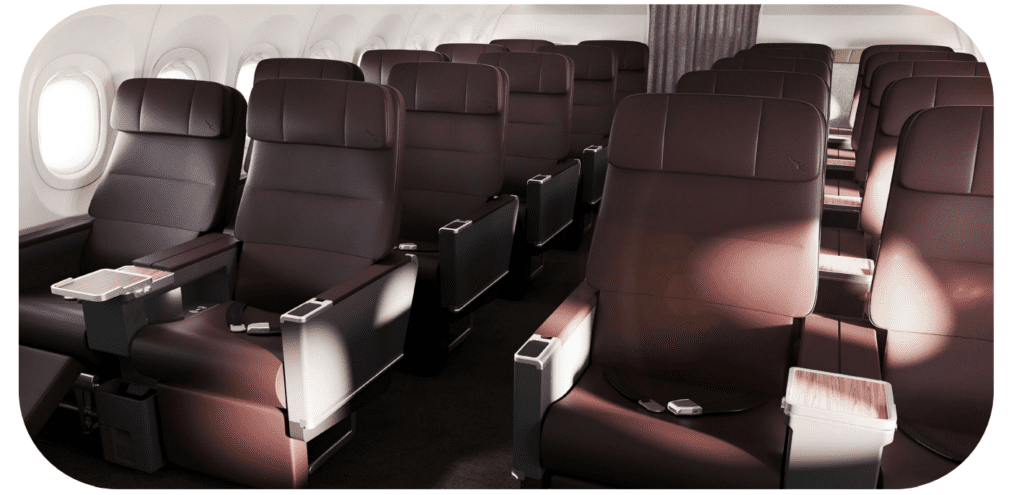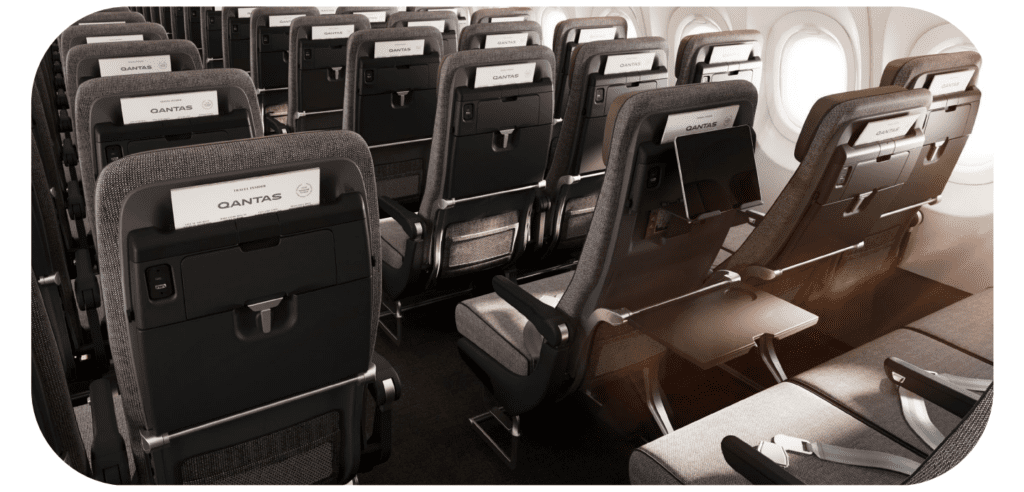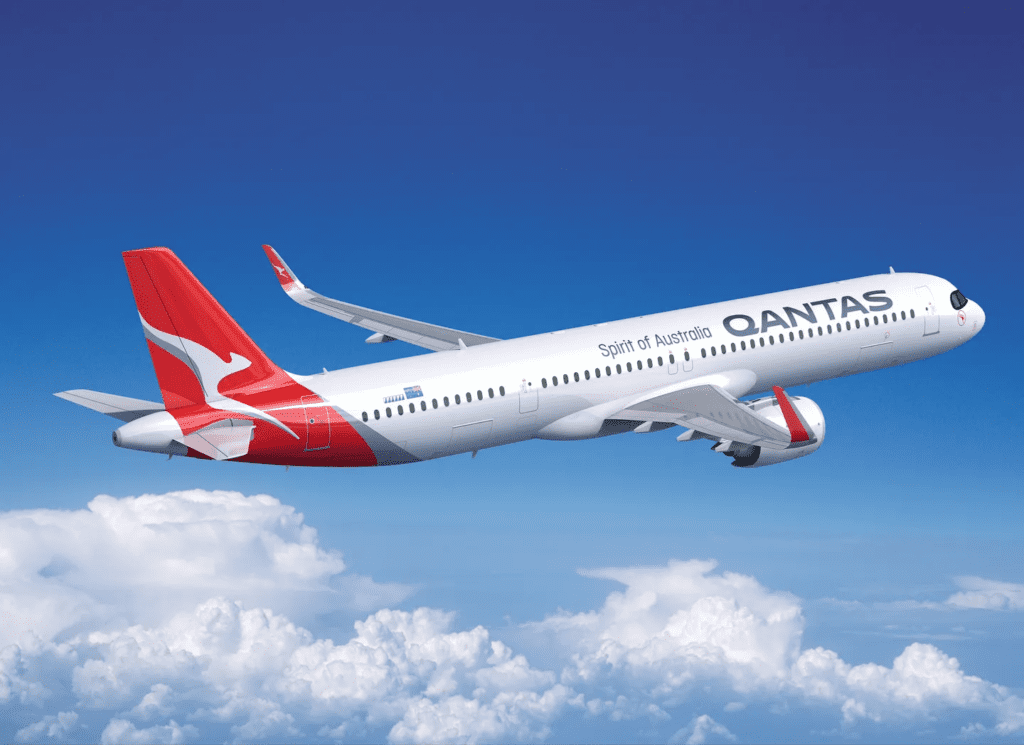Skift Take
Qantas is the latest big-name airline to switch from Boeing to Airbus for its next generation of planes. Despite huge retraining and operational complexities, the carrier is betting that the short-term pain will pay off handsomely.
Qantas revealed fresh details on Thursday about its all-new aircraft. The Australian flag carrier is due to receive an initial batch of 28 Airbus A321XLR planes, with the first arriving in April next year.
They are a direct replacement for the airlineâs existing Boeing 737s. The previous-generation jets are due to leave the Qantas fleet over the next decade.
There are high hopes for the new aircraft, which manufacturer Airbus has coined the âXLRâ or âXtra Long Rangeâ. Qantas says it will open up new direct Australian domestic and short-haul international routes.
As one of the worldâs largest, yet least densely populated countries, Qantas is likely to feel the benefits of the XLRâs improved range. It can fly around 1,500 nautical miles further than the outgoing 737s. The airline has highlighted Southeast Asia and the Pacific Islands as possible new markets for the narrowbody jet.
What Can Passengers Expect Onboard?
Despite being a replacement for the 737, the A321XLR is five meters (16.5 feet) longer than the Boeing jets it will replace. The larger plane can seat 197 passengers â an increase of 13% in overall seat capacity â with the amount of space between economy seats unchanged at 30 inches.
In line with global industry trends, Qantas is using the new plane to boost the number of premium options. The XLR will have 20 business class seats in a 2-2 configuration, representing a 66% increase on earlier models. The upscale seats will have a pitch of 37 inches and offer a five-inch recline. Other perks include a wireless charging pad, an extendable cocktail table, and adjustable calf-rest and footrest.

The airline says the larger plane will offer a âsense of spaciousness in the long cabin with higher ceilings and large windows.â The XLR is wider than the 737, allowing Qantas to install broader economy seats that are extra cushioned for comfort.
All seats have dual USB A and C charging ports, however, there will not be a physical inflight entertainment system. Instead, Qantas will offer free Wi-Fi and drop-down tablet holders for personal devices.
The airline has extended its collaboration with Australian industrial designer David Caon for the project, with a focus on new materials and colors âto make the cabin feel peaceful and brighter.â
On a practical note, extra-large overhead lockers allow for around 60% more carry-on bags than the 737. This should reduce the likelihood of passengers having luggage seized at the gate and placed in the hold on busy flights.


Retraining of pilots for the new plane is already underway, with around 240 flight crew due to be trained over the next three years. A further 2,000 cabin crew will also complete conversion training to learn about the new plane.
Commenting on the A321XLR developments, Vanessa Hudson, Qantas Group CEO said: âNearly half of all the customers Qantas carries each year travel on our 737 fleet so the A321XLR aircraft that weâve ordered to replace them will be incredibly important for our future. Its range and versatility will give us the opportunity to explore more non-stop routes and operate them cost effectively.â
Is the A321XLR Different from Project Sunrise?
Despite being built by Airbus and boasting an enhanced range, the A321XLR shouldnât be confused for a very separate Qantas project.
The success of its recent nonstop European flights from Perth in Western Australia has set the stage for âProject Sunriseâ. This is the codename for new routes that will fly even further than Perth to Europe. Based on current schedules, Qantas will connect Sydney and Melbourne to both London and New York starting in 2026.


If realized, they will become the worldâs longest nonstop passenger flights. So ambitious is the mission, that Qantas is working with Airbus for a specially optimized version of the twin-aisle A350-1000 aircraft to help make the route feasible.
Whatâs the Background of the A321XLR Project?
The A321XLR is due to be Airbusâ flagship single-aisle product. It builds upon the hugely successful A320 and A321 programs, which are already the cornerstone of fleets at JetBlue, Frontier Airlines, and easyJet.
The XLR has been in development for several years. When it was first announced in 2019, a target of summer 2023 was given for the first delivery. More recently, executives at the European firm said the second quarter of 2024 would be the date of the first handover, however this has slipped further still.
To squeeze even more flying range out of the same aircraft shell, Airbus has had to get creative. The XLR features an extra fuel tank, molded into the contours of the central-rear part of the aircraft.
While this allows the plane to fly up to 15% further, it concerned safety regulators. Officials highlighted fire risks and lengthier evacuations in the event of an accident. Subsequent tweaks to the design and the resulting tests to satisfy aviation authorities have taken time.
Who Else is Getting the XLR?
As recently as May, Aer Lingus was due to fly the XLR before anyone else. However, a high-stakes industrial dispute saw the Irish flag carrier lose the honor, with the first flight going to Spainâs Iberia instead. Both airlines are part of IAG, a group that also includes British Airways and Vueling.
As well as Qantas, Aer Lingus, and Iberia, other big-name customers for the XLR include United Airlines, American Airlines, AirAsia, and Saudia.
Earlier this year, IndiGo Airlines CEO Pieter Elbers told Skift about his grand plans to link India and Europe with the new aircraft.
Airlines Sector Stock Index Performance Year-to-Date
What am I looking at? The performance of airline sector stocks within the ST200. The index includes companies publicly traded across global markets including network carriers, low-cost carriers, and other related companies.
The Skift Travel 200 (ST200) combines the financial performance of nearly 200 travel companies worth more than a trillion dollars into a single number. See more airlines sector financial performance.
Read the full methodology behind the Skift Travel 200.

